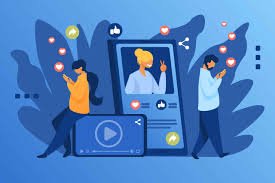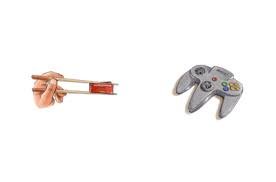“From TikTok to Textbooks: How Social Media is Reshaping Study Habits”
Updated: 17 May 2025
From Social Media to Social Studies: The Impact of Social Media on Learning Methods
The digital world we live in today, filled with fast-paced content, has drastically transformed the available tools of learning. Social Media Platforms, once considered as major distracters of education including TikTok, Instagram, and Youtube, have remarkably transformed into allies towards academics.(add citation) The scrolling routines of students across the world has undergone a massive transformation where it has become integrated with effective learning techniques. In educational content, students learn, retain, and engage unlike before.

The Emergence of “StudyTok,” Digital Global Learning Communities, and E-Learning
A notable phenomenon that is easily noticeable these days is the rise of “StudyTok”, where users share motivational routines and study tips. Creators on this platform have taken it upon themselves to share beauty vlogs and aesthetic desk setups alongside tutorials on how to properly organize drawers and shelves making highly desirable content for viewers. Because of social media’s transforming impact, creative instructional strategies have been adopted by many educators in lessons, driving effective time management techniques such as the Pomodoro Technique and Cornell Note Taking into viral trends.
The reason behind its success is that they are relatable and all-encompassing. Such lessons are dominantly offered by learners themselves. It facilitates self-help support amongst peers, which traditional education fails to address with all of its rigidity. Learner-dominated educational content has become exceptionally popular due to the huge flow of information available in minute-long clips. These short videos offer effective valorous lessons revealed in under a minute, such as calming music intended for studying, and focus-boosting playlists.

Motivation in the Age of Algorithms
Social media’s algorithms mean that users receive content catering to their preferences in real time. For students, this means that there are numerous educational posts that can be both informative and motivational. Seeing their classmates document their academic journeys creates a sense of belonging and combats the loneliness that sometimes permeates studying.
A good example of this is the “study with me” trend where creators livestream or record themselves studying. These multi-hour-long videos create a sense of remote togetherness that helps motivate and focus the viewer.

Microlearning: A Match Made in Digital Heaven
TikTok and the Instagram Reels feature perfectly encapsulate the microlearning concept—delivery of information in small, highly focused units. Instead of hour-long lectures, students are now breaking complex topics into 1-minute explainers. Imagine Crash Course-style videos for calculus, historical chronicles, or even grammar memes.
Learning in this format, while catering to short attention spans, allows learning to be much more flexible. Students can take up studying while on the move, during their commute, or even in between classes.

The Distraction and Discipline Dilemma
Social media offers countless educational resources to learners, however, it comes with pitfalls. The platform which provides SAT tutorial tips promotes boundless entertainment content. Endless scrolling is a challenge students struggle with and have to overcome.
Most people are setting digital boundaries with the help of app limiters, scheduled screen time, or with separate, “study-only” accounts. Some other people have structured their virtual environments for productivity using Notion and Forest.

It Is Time Educators and Institutions Adapt
Progressive educators are now starting to reach students where they actively engage with content, on social media. Teachers and tutors are posting content that simplifies complex topics in a bid to enhance engagement and rapport. Some universities are even trying out the use of Instagram reels to give updates and lecture summaries via YouTube Shorts.
This phenomenon indicates a shift in the future where academic s embrace the use of social media beyond marketing, but as an actual extension of learning.

In Summary: The Beginning Of A New Learning Era
Boundless scrolling on social media no longer stands as a break from studying. With proper guidance and digital mindfulness paired with the right scaffold, the aimless and time consuming activity of scrolling can be transformed into a an effective contemporary learning experience.
Oftentimes, technological progress brings about shifts in modern practices. In this case, social media beautifully demonstrates this change. Education will certainly benefit from the rise of TikTok and to textbooks as its content is expected to be more engaging, visual, and practical.


